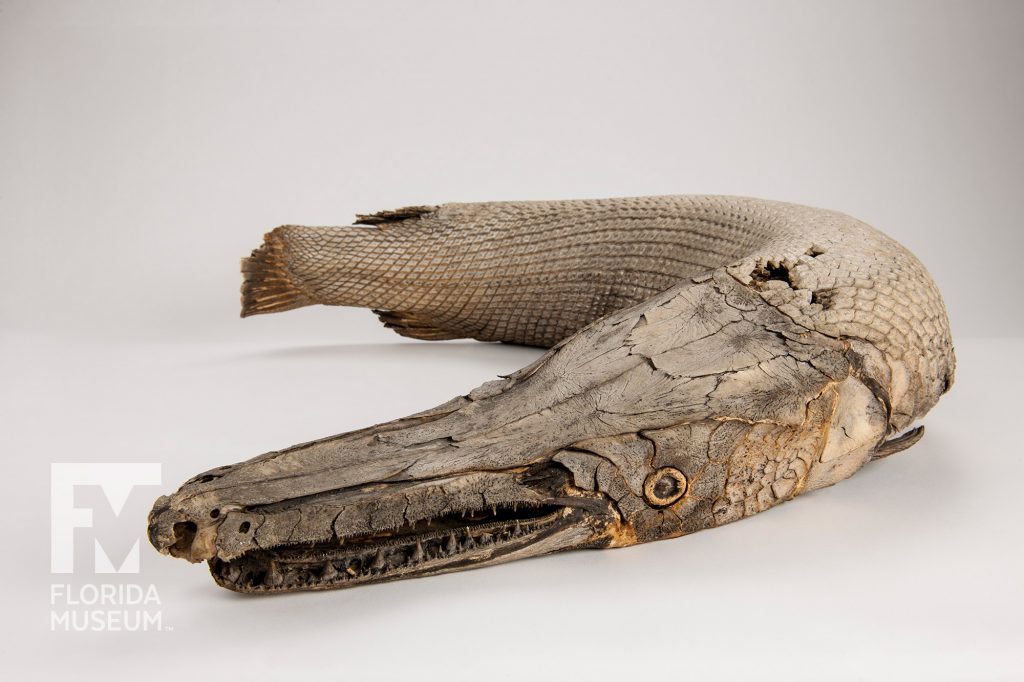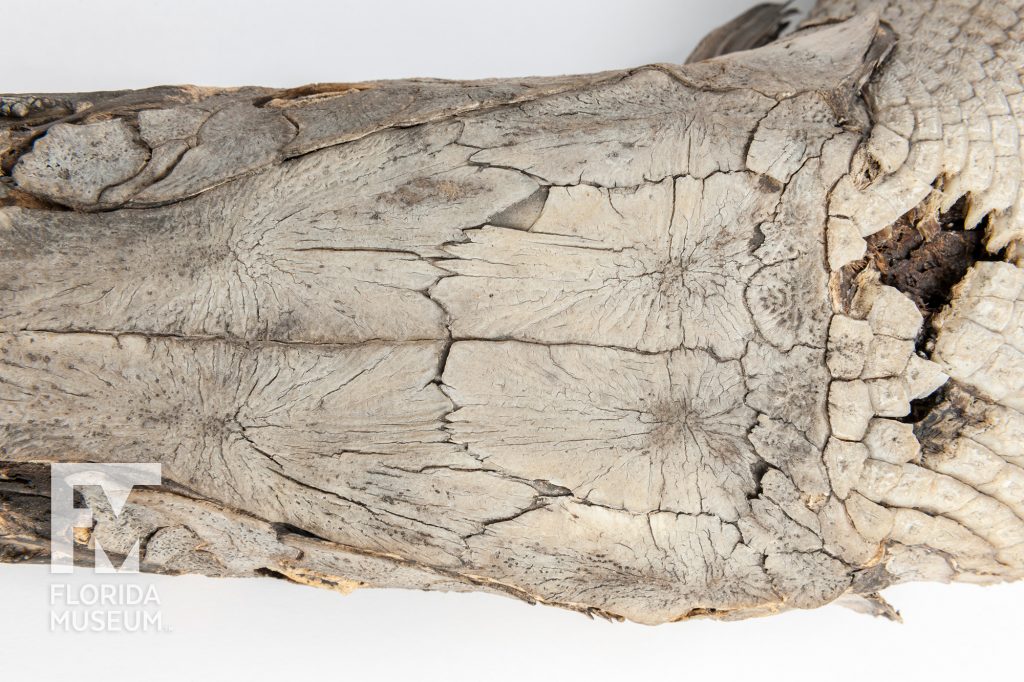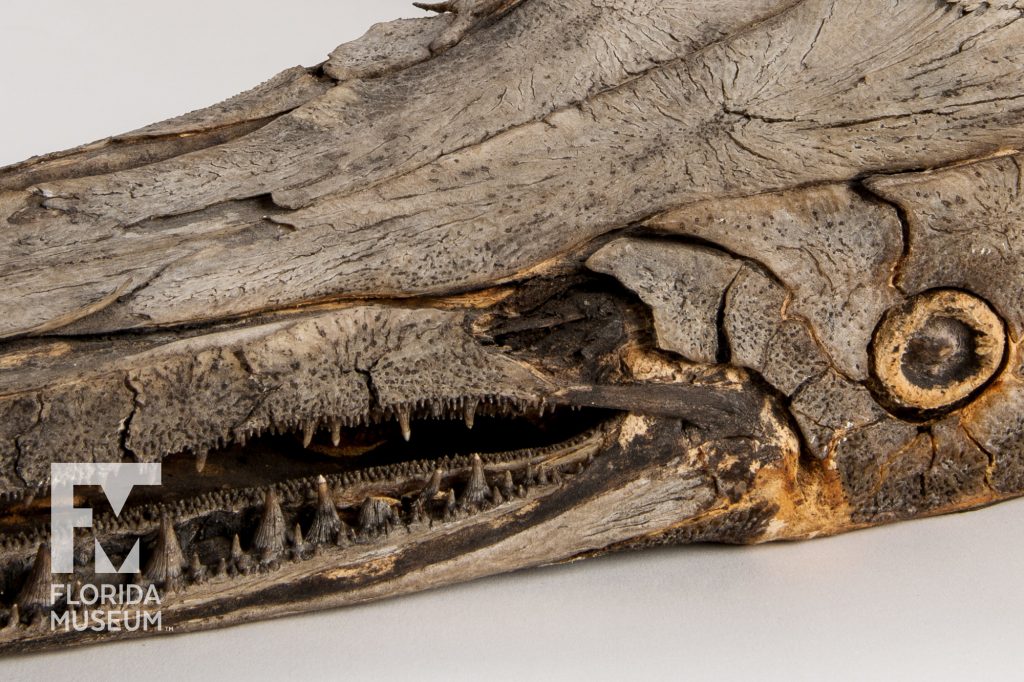Scientists use modern reference specimens to identify bone, shell and plant material from archaeological sites. Alligator Gar have changed little over millions of years, and researchers use this specimen to identify gar in ancient Native American middens (trash heaps).
Summary
Mummified Alligator Gar (Atractosteus spatulata)
Collection information unknown
From the Environmental Archaeology Teaching Collection
Collection
Story
The term “zooarchaeology” may not be a familiar term to some of you, but you certainly know our work. For example, if you would read about domestic dogs, chickens or turkeys; if you’ve encountered information regarding ancient climate change or sea level rise; if you’ve read about the ancient animals’ bones that are found in archaeological sites, then you know our work.
Zooarchaeology is the wedding of zoology and archaeology and we seek to understand the human and natural history of zooarchaeological sites. This is through the identification and quantification of bones using Museum comparative specimens. This unique specimen of alligator gar, Atractosteus spatula, serves as one example that you might enjoy seeing.
Alligator Gar and other members of their family have been referred to as living fossils that can be tracked back into the Cretaceous, nearly 145 million years ago. They are most common in aquatic and brackish water habitats of southeastern North America and their range extends to more northern parts of the Mississippi watershed. They can grow to be 6 feet long and exceed a hundred pounds. The world record catch was in 2011. The gar was 8.5 feet long, weighed 327 pounds and was estimated to be 94 years old. Presently Alligator Gars are sought for sport fish and they are used as a food resource. As a predator, they also are of ecological importance. Their populations have been somewhat diminished because of habitat loss.
In the zooarchaeological record, skeletal elements of fishes from the family of gar fish are commonly identified in archaeological sites. Members of the gar family were used as food resources for nearly 5,000 years. It has also been reported that their ganoid scales were used as arrow points by Native Americans. The scales and the vertebra are the most often identified skeletal elements of this animal in middens.
Irv Quitmyer
Zooarchaeologist*
Florida Museum of Natural History
Additional Information
Species profile: Alligator Gar (Atractosteus spatula)
Exhibit
On display Sept. 23, 2017-Jan. 7, 2018, Rare, Beautiful & Fascinating: 100 Years @FloridaMuseum celebrated the Museum’s rich history. Each Museum collection was asked to contribute its most interesting items and share the stories that make them special. Though the physical exhibit is closed, this companion website remains online, providing an opportunity to experience the Florida Museum’s most treasured specimens.
Exhibit Area: Objects Tell Stories
Theme: Surprising Biodiversity
 Want to see more? Explore more than 300 breathtaking color photos of plants, animals, fossils and cultural heritage materials from the Florida Museum of Natural History’s collections in the award-winning book All Things Beautiful available from the University Press of Florida.
Want to see more? Explore more than 300 breathtaking color photos of plants, animals, fossils and cultural heritage materials from the Florida Museum of Natural History’s collections in the award-winning book All Things Beautiful available from the University Press of Florida.
*This title was accurate at the time the exhibit was on display in 2017. Please visit the collection website to verify current staff and student information.



